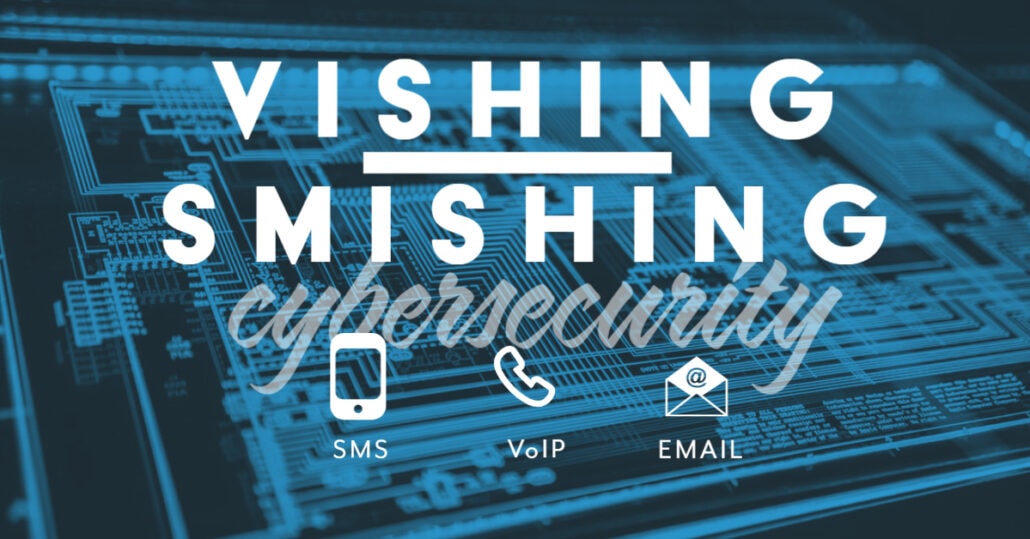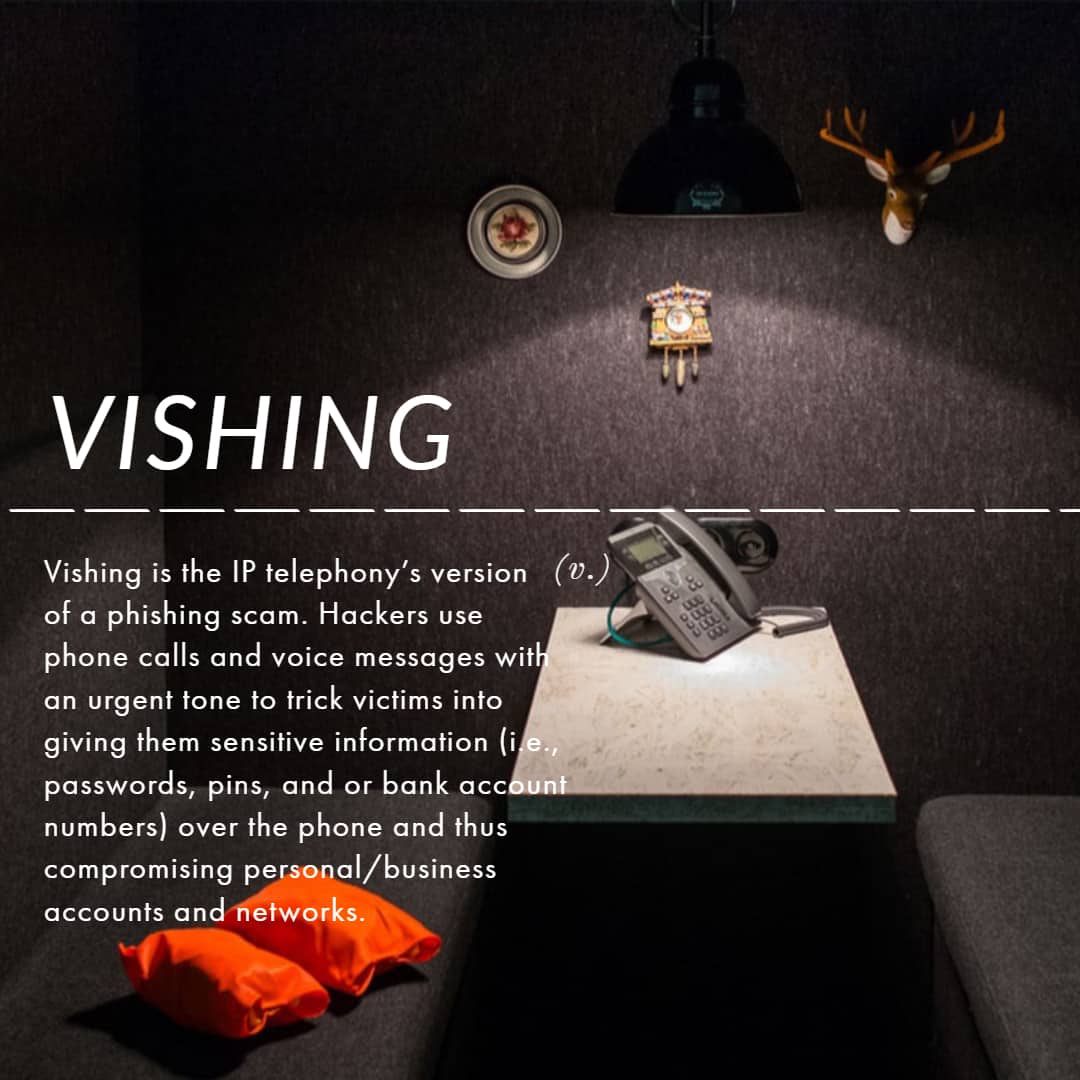By now, we hope that you are very familiar with the term phishing scams, what they are, how they work, and how to avoid them.
Well, we have a couple of new ones to add to your lexicon. Smishing and vishing. What are they, and how can you prevent them?
Much like phishing, these two scams are used by cybercriminals to manipulate individuals into divulging confidential or personal information to be used to gain access to a bank account or networks for financial gain. The difference is the vehicle they use.
Vishing is the IP telephony’s version of a phishing scam. Hackers use phone calls and voice messages with an urgent tone to trick victims into giving them sensitive information (i.e., passwords, pins, and or bank account numbers) over the phone and thus compromising personal/business accounts and networks.
Smishing is a phishing scam that utilizes text messages to trick victims into sending money, divulging sensitive information, visiting a risky site, and or downloading malicious apps onto a smartphone.
Sometimes they use a vishing scam and smishing scam together. This scam uses tech or customer support to scam their victim.
The victim will receive an SMS message that will instruct the recipient to contact their bank customer support or their work tech support via a telephone number provided. Once on the line, they convince the victim to give them their personal information to remedy a situation, or they instruct the victim to download “updates” to their computer. In both instances, the hacker takes advantage of the individual’s naivete and their desire to do the “right thing.”
In all instances, the lecture is the same.
Never click on links from unknown senders, whether through email or text message. Never give sensitive information over the phone unless you are SURE they are who they say they are.
Be cautious when the email, text message, or call has a deadline with dire circumstances. Always practice vigilance because these criminals are continually looking to exploit human vulnerabilities.




